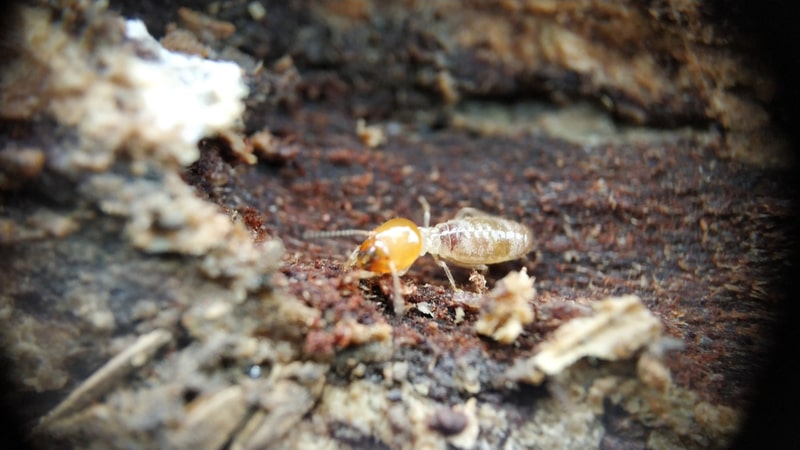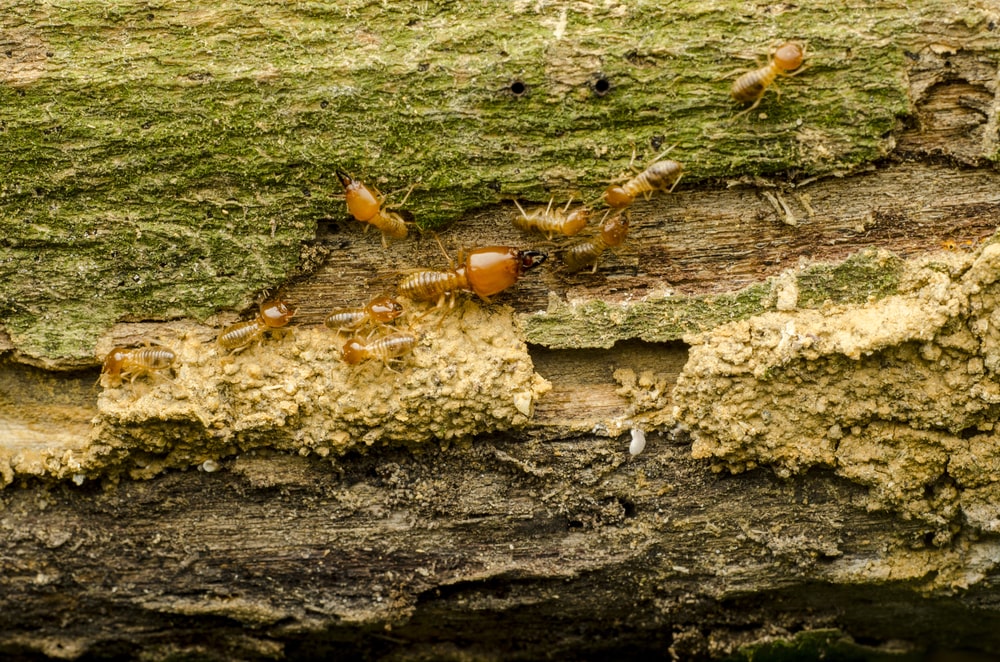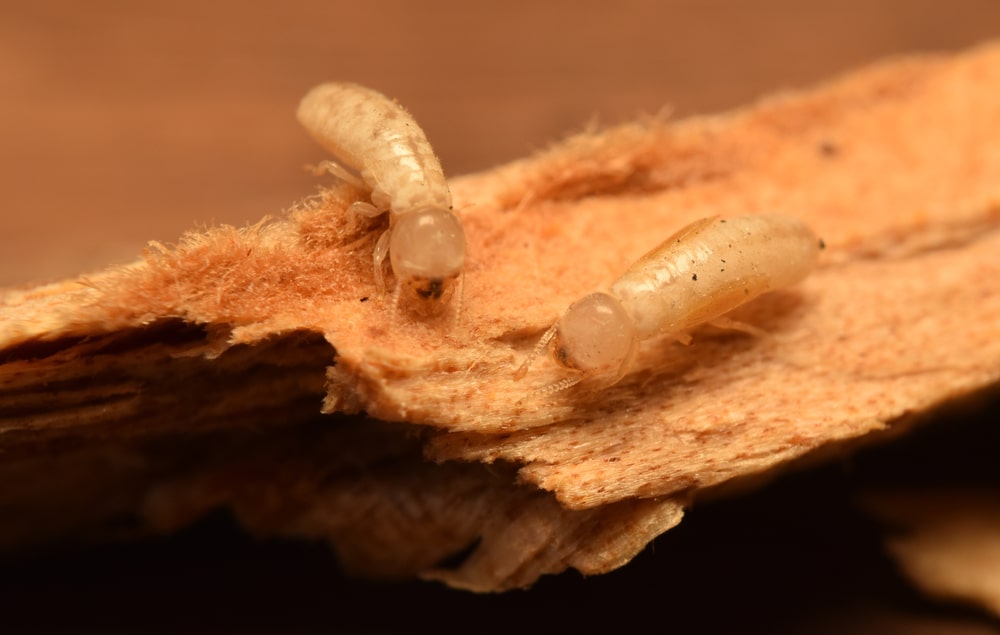Contributed by: Doug Webb
Updated on: January 5, 2023
What are drywood termites?
Drywood termites are a species of termite that typically makes its home in dry wood that forms the structural foundation of a home, as well as within wooden fixtures and furniture inside a home. Drywood termites are most often found above ground and, unlike subterranean termites, do not need to make contact with soil in order to thrive.
Although drywood termite colonies do not develop as rapidly as other species of termites, they can do extensive damage once they invade your home with their numbers expanding into the thousands.
What do drywood termites look like?
- Size: Drywood termites are different sizes depending on their caste. Soldiers are typically three-eighths of an inch long. Reproductives (both male and female) measure one-half of an inch in length.
- Color: Alates, or winged termites, have wings that can be clear or smokey gray in color. A drywood termite is usually pale brown, though it can vary between dark brown and light, yellowish-tan.
- Wings: As mentioned previously, winged drywood alates have translucent or smokey gray in color. They have two sets of wings – forewings and hind wings – that are equal in length. Drywood termite have a distinctive pattern of veins on their forewings, making them easier to identify.
- Mandibles: Drywood termites have mandibles that protrude from their head segment.

Drywood termite habits and behavior
As with other species of termites, drywood termites are organized in a caste system. Once a queen finds a good spot for a colony (often in the rafters of a home), she chooses a mate (or king) and begins laying eggs, starting an infestation in a structure like a house.
The eggs hatch and join the worker caste that eats (and damages) wood and cares for the rest of the colony. As the termite colony ages, some of the termites develop into reproductive or soldier castes. Reproductive termites will grow wings, swarm and go off to form new colonies. Soldier termites protect the established colony from ants, other termites and various threats.
Like other species of termites, this species eats cellulose, which is found in wood and other plants. This is what makes wooden structures so appealing to them and why they are found in homes, fences and trees.
However, drywood termites eat across the grain which destroys both the soft springwood growth and the harder summerwood growth. Because they eat across the grain, the tunneling can lead to significant structural damage if the colony's network of tunnels grows too extensive.

Drywood termite habitats
In the United States, drywood termites can be found in a narrow strip that runs roughly from Florida to California − warm to tropical climates where wooden structures are plentiful and winters are not severe.
A drywood termite likes to eat. And unlike its subterranean counterparts, it does not need moist soil or water nearby in order to thrive. Because they don't need additional water, these termites are often found in dry wood above ground level. The wood they eat provides the moisture they need to survive.

Drywood termite signs
Seeing a swarm of reproductive termites, which emerge from small holes in the wood, is a common sign of an infestation.
Other signs include:
- Blistering of the wood surface because the termites tunnel too close to the surface.
- Kick-out holes in wood, which termites use to “kick out" their excrement from their tunnels.
- Pellet-like droppings that accumulate on the ground outside of these kick-out holes.
Drywood termite pellets (or “frass") are usually the color of the wood they are eating. They are smaller than grains of rice and pile up below areas of damaged wood.
Tips for drywood termite prevention
To make your home less attractive to drywood termites, you should:
- Keep firewood and other lumber away from your home's foundation.
- Place fitted, type 20 mesh screen on all doors, windows, vents, openings, etc., especially ones that lead to attics and crawl spaces.
- Seal up any unfinished wood in, on and around your home. You can use paint, varnish or sealant, but make sure the coats are even and any nail holes or other cracks are sealed, as well.
Drywood termite treatment
Evidence of drywood termites is not always easy to see can can be overlooked. If you suspect you might have drywood termites, you should explore treatment options immediately.
You'll need to enlist the aid of a pest management professional to control drywood termites. Contact Terminix for a free drywood termite inspection.


